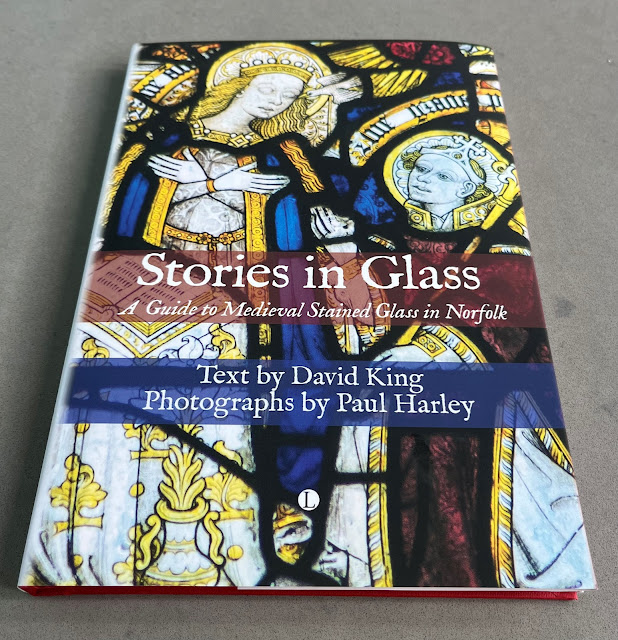Stories in Glass: Norfolk stained glass, old and new
Today, I purchased a copy of ‘Stories in Glass: A Guide to Medieval Stained Glass in Norfolk’. The text for this authoritative and accessible work is written by David King, who – having been born into a family of stained glass makers – has the hands-on insight of a craftsman, combined with the rigour of an academic researcher. The photography, by my friend, Paul Harley, is outstanding and brings us face-to-face with the crisp detail and vivid colour of some of Norfolk’s rich stained-glass heritage. I have already decided to buy an additional copy which I will take out with me as a 'working copy' when exploring the county’s churches. The book is intuitive and well organised with, for instance, a map of the key sites covered by the book, as well as a very useful glossary. Overall, it is a great introduction to the county’s medieval stained glass, offering a visual feast of brilliant images.
I bought
this with a voucher that was a present from a recent birthday. I am reminded that it was ten
years ago that my lovely wife gifted me a beautiful little roundel commissioned
from local stained glass artist, Sarah Bristow. It seems timely to share this
with you here.
As some of you may instantly recognise, it is directly inspired by figures from the fourteenth century Despenser Reredos in Norwich Cathedral, capturing them as they look up at Jesus ascending heavenwards from the earthly realm.
 |
| The Despenser Reredos |
 |
| The Ascension panel |
In the background is a multiple hexfoil (or, 'daisywheel'), representing the most common surviving motif, as revealed by contemporary medieval graffiti archaeology in our churches. I am an adopted son of Norwich, a trained cathedral guide and, formerly, a freelance educator at Norwich Cathedral. I was also, briefly, the Deputy Director of the groundbreaking (or, rather, the ‘light-raking’!) Norfolk Medieval Graffiti Survey (NMGS). Among other things, I was involved in the survey work we undertook in Norwich Cathedral that captured such an extensive and rich material culture of pre-modern graffiti here.
 |
| Image Source: Norfolk Medieval Graffiti Survey website |
On the NMGS website, project Director, Matt Champion, has this to say about hexfoils: 'At the present time we believe that the vast majority of these designs acted as 'ritual protection' (apotropaic) markings. There is no simple explanation of the form and function of apotropaic markings. At their most basic level they could be seen as bringing luck and protecting individuals from evil or malign influence. At a more complex quasi-theological level they were designed to trap the demons that roamed the world within their complex structure, quite literally pinning them to the walls.'
My stained glass roundel is, then, a work that brings together some elements very dear to my heritage-inspired heart. 'Stories in Stone' will continue to enrich my wanderings into the future and I am indebted to David and Paul for their endeavours in producing such great work.
The Fallible Flaneur <*(((((><(




Comments
Post a Comment